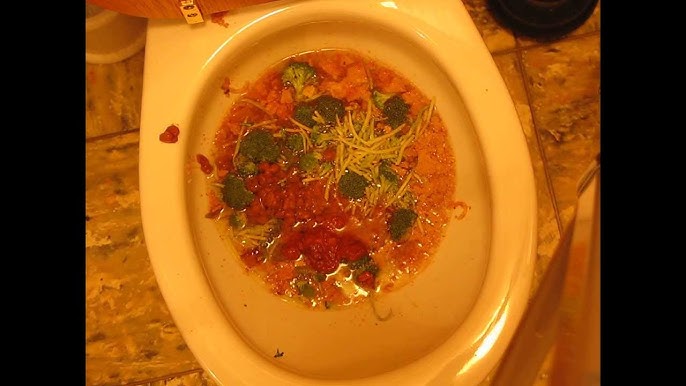We've noticed the article pertaining to What Can Happen If You Flush Food Down the Toilet? down the page on the web and thought it made perfect sense to share it with you in this article.

Introduction
Many people are frequently confronted with the predicament of what to do with food waste, particularly when it concerns leftovers or scraps. One usual question that emerges is whether it's alright to flush food down the bathroom. In this write-up, we'll look into the reasons that individuals could think about flushing food, the repercussions of doing so, and alternative methods for appropriate disposal.
Reasons that individuals could think about purging food
Absence of understanding
Some individuals may not recognize the potential harm caused by purging food down the bathroom. They might incorrectly think that it's a safe practice.
Benefit
Flushing food down the bathroom might look like a quick and simple remedy to getting rid of unwanted scraps, specifically when there's no close-by trash can readily available.
Idleness
In many cases, individuals may just pick to flush food out of large idleness, without considering the consequences of their activities.
Consequences of flushing food down the commode
Ecological influence
Food waste that winds up in rivers can contribute to pollution and injury marine ecosystems. In addition, the water used to purge food can strain water resources.
Plumbing issues
Flushing food can bring about clogged up pipes and drains, triggering expensive plumbing repair work and hassles.
Types of food that ought to not be purged
Fibrous foods
Foods with coarse appearances such as celery or corn husks can get entangled in pipelines and cause clogs.
Starchy foods
Starchy foods like pasta and rice can soak up water and swell, bring about clogs in pipes.
Oils and fats
Greasy foods like bacon or cooking oils should never be purged down the commode as they can solidify and create obstructions.
Appropriate disposal approaches for food waste
Making use of a waste disposal unit
For homes equipped with garbage disposals, food scraps can be ground up and flushed via the plumbing system. Nevertheless, not all foods appropriate for disposal in this way.
Recycling
Particular food packaging materials can be recycled, minimizing waste and minimizing environmental influence.
Composting
Composting is an environment-friendly method to deal with food waste. Organic products can be composted and utilized to enhance soil for horticulture.
The value of proper waste administration
Lowering environmental injury
Proper waste management methods, such as composting and recycling, aid lessen pollution and protect natural resources for future generations.
Shielding plumbing systems
By staying clear of the method of flushing food down the toilet, home owners can stop pricey pipes repairs and maintain the honesty of their pipes systems.
Final thought
To conclude, while it might be appealing to flush food down the toilet for convenience, it is very important to understand the prospective effects of this activity. By embracing appropriate waste monitoring techniques and throwing away food waste sensibly, individuals can add to healthier pipes systems and a cleaner atmosphere for all.
FLUSH FOOD DOWN THE TOILET?
FLUSHING FOOD CAN CAUSE BLOCKED DRAINS IN YOUR HOME
All of the plumbing fixtures in your home are connected to the same sewer pipe outside of your home. This outdoor sewer pipe is responsible for transporting all the wastewater from your home to the Council sewer mains. Even small pieces of food that go down the kitchen sink can cause problems for your sewer. It should therefore be obvious that flushing larger bits of food, such as meat, risks a clog in either the toilet itself or the sewer pipes. Flushing greasy food is even more problematic because oil coagulates when it cools, coating the interior lining of your pipes.
THE TOILET IS NOT A BIN
Food isn’t the only thing that people shouldn’t be flushing down the toilet. People use the toilet to dispose of all kinds of things such as tampons, makeup wipes, dental floss, kitty litter and even underwear. Water goes to great lengths to educate residents about the high costs and stress placed on wastewater treatment systems simply from people flushing the wrong stuff down the toilet. It costs taxpayers millions of dollars each year, and homeowners thousands in blocked drain repairs.
FLUSHING FOOD IS A WASTE OF WATER
Flushing food is a waste of our most precious resource - water. In June this year Level 1 water restrictions were introduced to protect water supply from drought conditions. Much of New South Wales continues to be affected by prolonged drought with recent figures revealing up to 97 per cent of the state remains in drought. Depending on whether you have a single or dual flush toilet, every single flush uses between five and 11 litres of water. In the current climate this is a huge amount of water to be wasting on flushing food that should be placed in the bin (or better yet, the compost).
https://www.jabplumbingsolutions.com.au/blog/can-you-flush-food-down-the-toilet

We had been made aware of that article about from a friend on another web address. Enjoyed reading our post? Please share it. Help somebody else check it out. I recognize the value of your readership.
Book Instantly
Comments on “Is it Logical to Flush Food in the Toilet?”